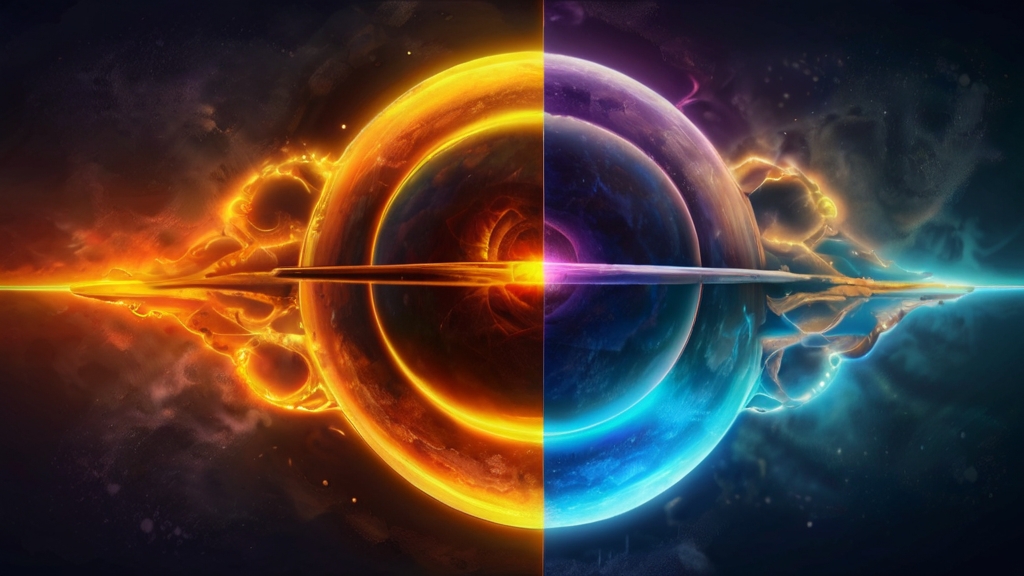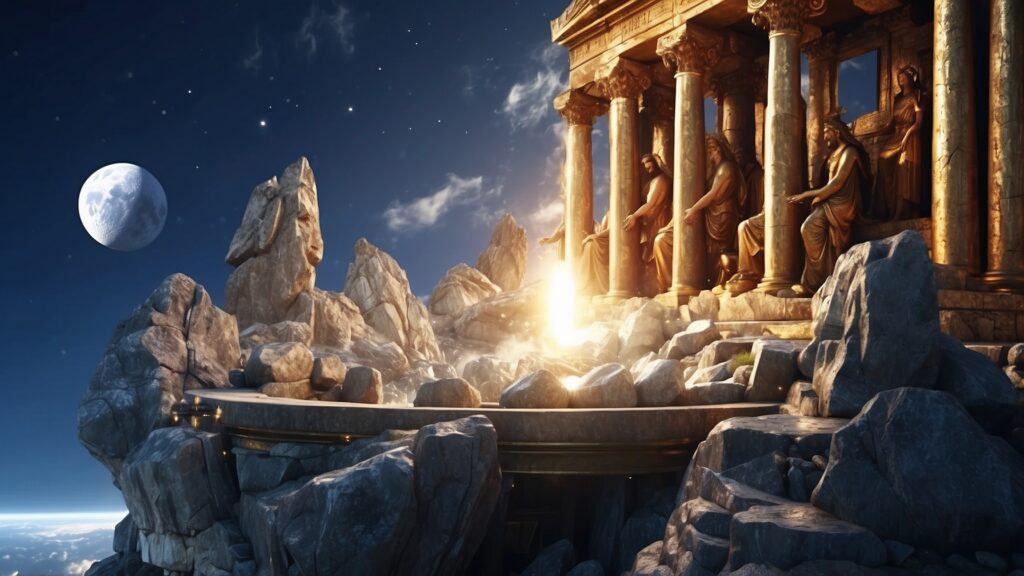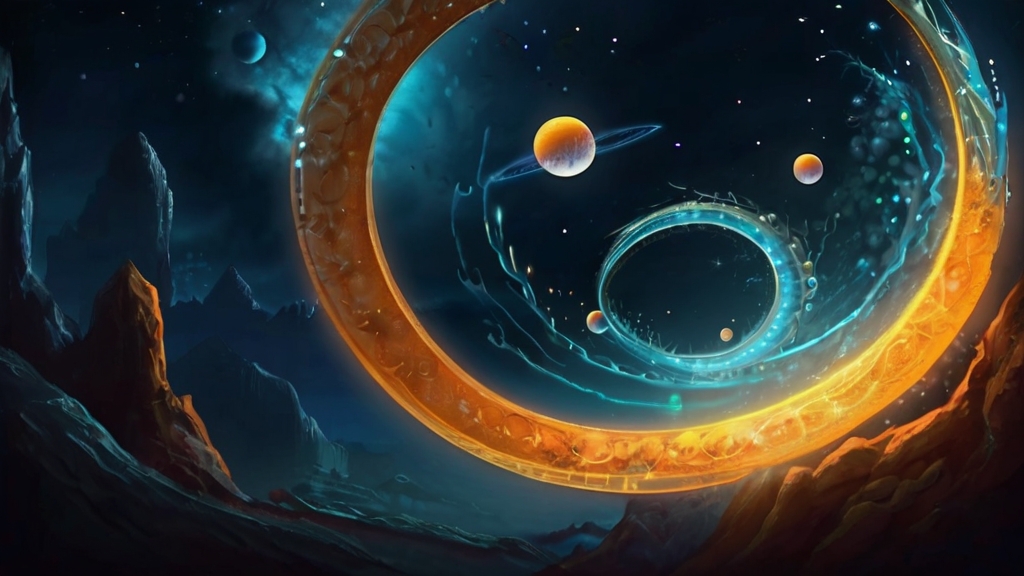From when we were kids, we often heard stories from our grandparents or parents. These stories seemed like fairytales and made us wonder if we could ever do something similar. But as we grew older, we started seeing these stories as myths, thinking they were not possible. What if, though, those childhood tales are actually connected to advanced science, something way beyond what today’s science understands? For example, Brahma and the concept of time, Samudra manthana (Samudra manthan), and the churning process. I’m starting a blog to explore these myths, especially those related to mythology and physics. As someone who has done a master’s in physics, these topics have always fascinated me and made me want to dig deeper.
Famous concept of Physics which can be connected to Mythology
There are lots of stories in mythology that can be explained as physics concepts. The famous ones are as below:
- Nataraja (Dance of Shiva) – Creation, Preservation and Destruction: Nataraja is the cosmic dance of Shiva. It is a really famous side of Shiva known to the world. Shiva’s Dance represents the rhythmic flow of the time and cosmic forces at play.
- Brahma, Vishnu and Mahesh – Creation and destruction: In Hindu mythology, there is a cycle of creation(Brahma), preservation(Vishnu) and destruction(Mahesh). Which gives the concept of the Big Bang, Cosmic Expansion and Potential Big Crunch.
- Samudra Manthan (churning of the ocean) – Turbulence: this story involves demons and gods churning the ocean to obtain the nectar of immortality. In physics, such a concept is known as turbulence and the dynamic processes that shape the cosmos.
- Akasha – Ether: Well all genshin impact players are familiar with the term. In mythology, akasha is considered as the 5th element, which is open vast infinite space. In modern cosmological concepts, it is known as the vastness and structure of the universe.
- Yugas – Ages or Epochas: In Hindu Mythology cycle of time is known as yugas. Some interpret these yuga as a scientific concept of cosmic time, evolutionary process and changing of nature in the universe. Which we can see in mythical stories that how in each yugas world-building and humans changed.
Historical perspective on physics

The historical perspective of physics is nothing but an understanding of the natural world from ancient, philosophical, and mythological concepts. I have even heard from some people that these concepts are hard to understand, so Rishi Muni and all made it into a religious story and connected it with god so it’s easy for the general public to understand. In short, they described rishi muni as nothing but a scientist in modern terms.
Also, there is a very famous concept of Aristotle. He proposed the existence of earth, fire, water and air, which helped a lot in shaping and prevailing the worldview for centuries. However, in modern science, the 5th element which is known as ether came out. After that people noticed the Hindu mythology concepts of 5 elements that were there from the beginning known as Prithvi (Earth), Jala (Water), Vayu (Air), and Akasha (Ether).
From the 16th to 19th century lots of physics concepts came until in the early 20th century quantum mechanics was introduced and Einstein’s theory of relativity came out, which rephrased the concepts of matter, energy space, and time.
In this era, physics has branched into various specialized fields, including particle physics, astrophysics, and quantum mechanics. Technological advancement helped a lot of physicists to explore the universe. Still, the historical perspective on physics comes in between human curiosity, and theoretical insight and drives ongoing mysteries of the natural world.
Understanding of mythology and physics
When we are talking about understanding physics through mythology we need to understand mythology itself first. Mythology is not just some ancient stories. They have wisdom, beliefs and an imaginative construct of society throughout history. So these imaginative concepts help us to understand complex ideas through human experience. Exploring mythology allows us to know more about universal patterns and laws of time and culture. When we try to understand mythology it helps us to understand more about how ancient societies searched to make sense of the world around them and deep human thoughts. So when we know more about mythology it not only helps us to understand the culture but also helps to understand how mythical stories are connected to science and fundamental physics.
Wonders of mythology
When you are understanding science, particularly physics through mythology you need to have profound insights into ancient narratives. People just see mythology as only folklore however it consists of lots of mysteries of the physics world. In my theology gods, heroes and cosmic battles while seemingly fantastical often mirror fundamental physics. For example, stories about creation destruction in mythology parallel the cyclic nature of the physical processes in the universe. Also, gods controlling nature also talk about laws governing matter and energy.
Moreover, the mythical creatures, dragons, gods, and enchanted lands may be talking about unexplored dimensions or something beyond our understanding for now. Mythology does provide an unconventional yet insightful lens through which physicists can explore, interpret and potentially demystify the intricate workings of the physical world. Combining ancient stories and physics, mythology offers a bridge to know more about the wonders of physics.
Exploring gods and goddess
When we talk about god and goddess instead of seeing it as a religious purpose you can also see physics when we talk about their power. For example, the Greek god Zeus, the wielder of thunderbolts, can be interpreted as a representation of the atmospheric electrical discharge, a phenomenon we now understand as lighting.
Similarly in Greek mythology goddesses like Gaia which have the power of earth, can be seen as representations of our planet and ecosystem. In Hindu mythology, the goddess Saraswati with power of knowledge and arts, reflecting the profound connection between wisdom and underlying principles of the universe.
From this, you can imagine that in ancient times, to understand these difficult concepts of physics, gods and goddesses became metaphors for the forces and energies that governed the world. In this way, the exploration of gods and goddesses becomes an amusing journey.
Scientific Explanations or Coincidence?

Is it just a coincidence that ancient myths can give scientific explanations? Yes and no. People who created these myths can say they were great scientists who were keen observers of the world and tried to explain things in simple ways to the general public with the knowledge they had. While stories might not be scientifically accurate or maybe we lost that advanced world in some tragic incident and lost the whole story we can tell that humans have always been curious about the world. Today we use science to understand these natural phenomena better or you can say if ancient people were more advanced we are trying to go that way again.
Refuting Mythological Misconceptions
Mythology is like a captivating storybook filled with gods and goddesses and magical tales from ancient times but sometimes people misunderstand its purpose. Mythology is a treasure trove of human imagination, creativity and path of understanding. By appreciating myths for what they are, culture and embracing the richness of our shared human heritage. So, next time when you listen to some myth, try to approach it with an open mind, ready to uncover the timeless wisdom within its enchanting tales.
Exploring the Scientific Concepts in Mythology

Practical Applications of mythology in science
Learning about myths and science isn’t just fun – it’s also super useful! Imagine if you could use the stories of ancient heroes and gods to help solve problems in the real world. Well, that’s exactly what people do! Scientists and inventors sometimes get inspired by these old stories to create new things. For example, they might use ideas from myths to design cool gadgets or even find ways to protect the environment. So, when we learn about myths and science, we’re not just exploring fun stories – we’re also getting ready to do amazing things and make the world a better place!
In Hindu mythology, there’s a fascinating story about Lord Krishna lifting a huge mountain called Govardhan to protect villagers from a storm. This story teaches us about the concepts of force and gravity in physics. Just like how Krishna used his strength to hold up the mountain, we can understand that objects stay in place or move because of forces like gravity pulling them towards the Earth. This helps scientists understand how things work in our world and even helps engineers design strong structures like bridges and buildings.
Another interesting tale is about Lord Ganesha and his broken tusk. According to the story, Ganesha broke his tusk to use it as a pen to write down the epic Mahabharata as dictated by the sage Vyasa. This story can help us learn about the properties of materials, like how certain objects can be used for different purposes. It also shows us the importance of resourcefulness and creativity, which are essential in both science and everyday life. By understanding these concepts, we can create new inventions and find solutions to different problems we face. But that’s not it as the tusk was part of his body it also shows how missing a piece in the body doesn’t mean you can’t survive and how biology works. As we all know lord Ganesha looked like a human but because of Shiva’s wrath he lost his head which can’t be used to reattach, so an elephant’s head was used instead. This shows that not you just need another human part to replace the missing part of a human body and it can become a great discovery in the future of biology.
Note from me: Though I don’t think people are ready to see humans with animal parts they will definitely call them demi human or devil also biology is still not there to replace human parts of the body with animals. This also shows how advanced people in the past were.
Conclusion
From this you tell that myths are like magical stories from long ago that can teach us big ideas about how the world works. They’re full of gods, heroes, and big battles, but they also tell us about things like lightning and the stars in the sky. When we listen to these stories, we can learn about important questions that scientists ask about the universe. It’s like a treasure hunt where we find hidden clues that help us understand more about physics, which is all about how things move and work in the world. So, when we explore these ancient tales, we get new ideas and ways to think about how everything in the universe is connected, including us!


अत्यंत सरल सरल शब्दों में रहस्यों को उजागर किया